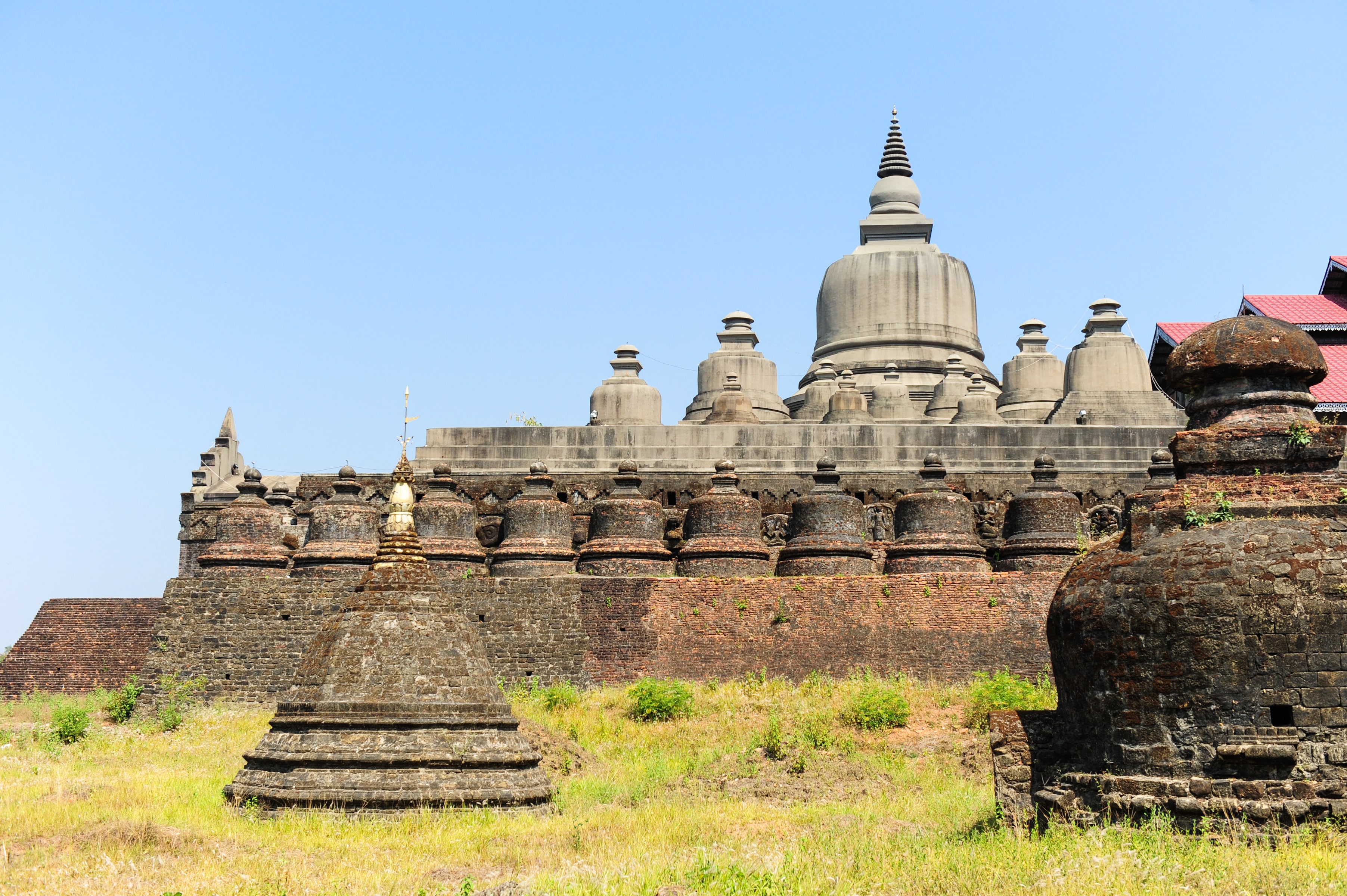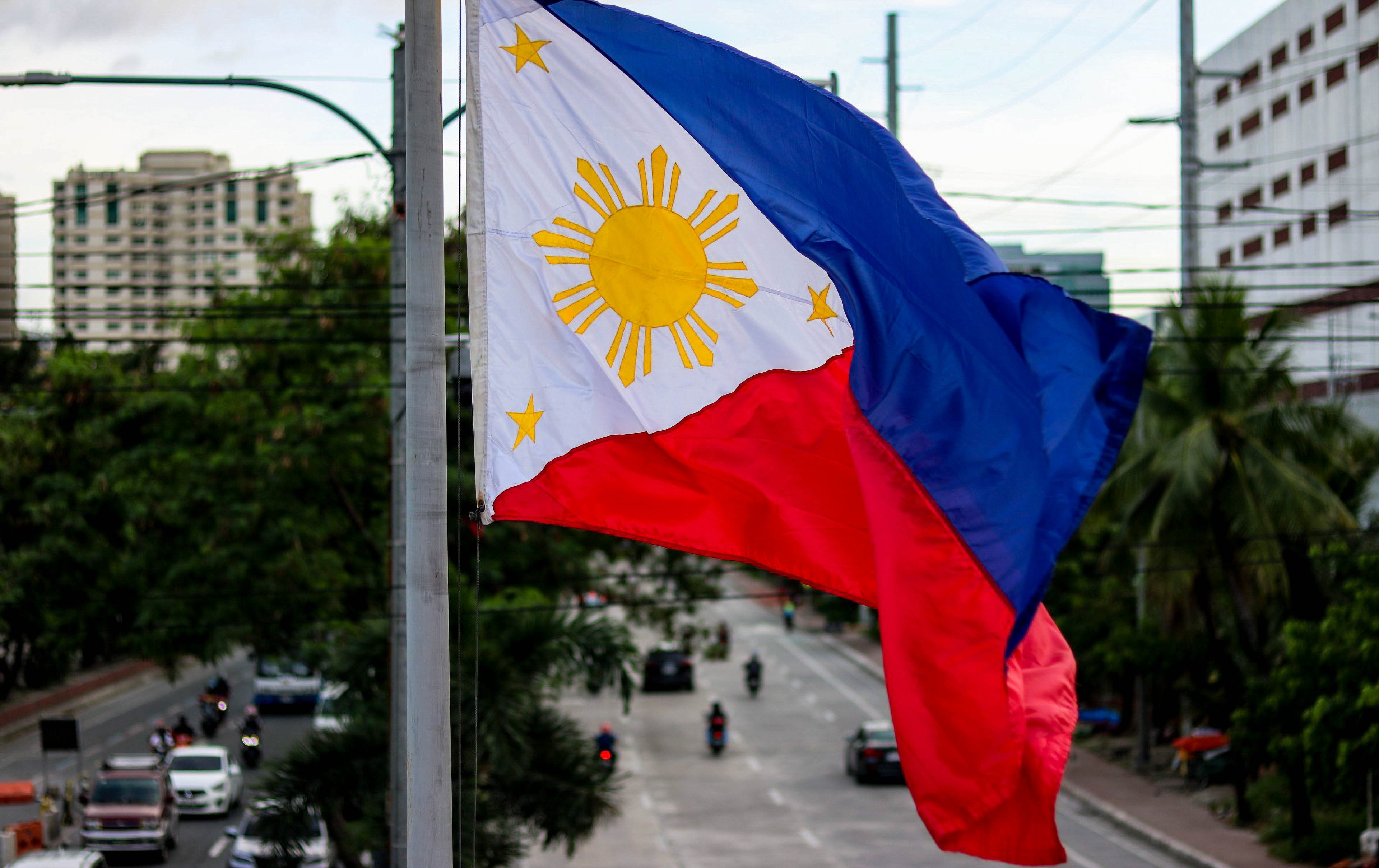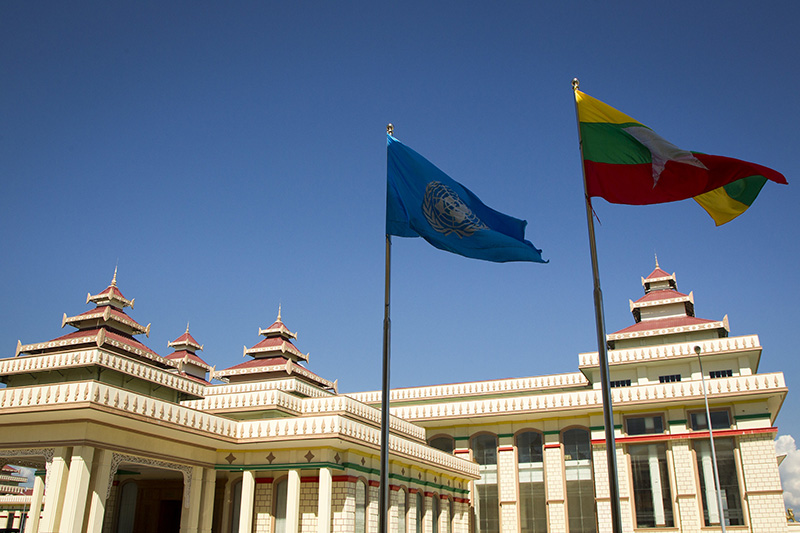Since 2010, former President Benigno Aquino III had pursued a balancing or a challenging policy on China’s expansive maritime claim in the South China Sea. He countered Chinese maritime expansion by shifting the AFP’s focus from domestic security to territorial defence; bolstering closer Philippine-US security relations, acquiring American military equipment, seeking from Washington an explicit security guarantee under the 1951 Mutual Defence Treaty (MDT), and promoting a strategic partnership with Japan. In late April 2014, the Philippines signed the 2014 Enhanced Defence Cooperation Agreement (EDCA) with its strategic ally, the United States. Designed to constrain Chinese maritime expansion in the South China Sea, the agreement was designed to provide American forces a strategic footprint in Southeast Asia through rotational presence in Philippine territory. By strengthening the country’s security relations with the US and Japan, the Philippines got involved again in a classical geopolitical game among the great powers in East Asia.
President Rodrigo Roa Duterte, however, is determined on undoing former President Aquino’s geopolitical agenda in the South China Sea dispute. Less than three months in office and after the Permanent Court of Arbitration (PCA) land-mark award to the Philippines in its territorial row with China in the South China Sea, President Duterte launched a diplomatic offensive to earn Chinese goodwill. He downplayed the South China Sea dispute in the Association of Southeast Asian Nations (ASEAN) summit meeting in Laos in an effort to curry diplomatic and economic concessions from China.
President Duterte also declared that he wanted to distance the Philippines from the United States, a move that will not only alter the region’s strategic balance but mark a dramatic departure from his country’s long standing policy of maintaining close security ties with its only strategic ally. After this trip to Laos, he declared that the Philippines would stop joining the US Navy in patrolling the South China Sea to avoid upsetting Beijing. He also said that he wanted US Special Operations Forces (SOF) supporting the AFP in counter-terrorism operations in Mindanao to withdraw from the island. Consequently, his pronouncements and actions eroded the Philippines’ influence in the ASEAN on the South China Sea issue and generated a major crisis in Philippine-US alliance.
President Duterte is actively seeking Chinese assistance for the construction of drug-rehabilitation centres for Filipino drug dependents, soft loans for the constructions of railways in Mindanao, and even the acquisition of Chinese-made weapons for the AFP. His goal is to foster closer economic and diplomatic relations with China while distancing the Philippines from the US. Consequently, President Duterte’s subsequent pronouncements and actions to gravitate closer to China have triggered a crisis in the Philippine-US alliance. President Duterte’s policy of effecting a dramatic departure from the Philippines’ long standing policy of maintaining close security ties with its traditional and only strategic ally — the US — has altered the regional balance of power in favour of China. It has also transformed the Philippines’ approach in the South China Sea dispute, from challenging China’s expansion to an outright appeasement of this expansionist regional power.
The Aquino Administration’s Geo-political Agenda in the South China Sea Dispute
On 2 March 2011, two Chinese patrol boats harassed a survey ship commissioned by the Philippine Department of Energy (DOE) to conduct natural gas exploration in the Reed Bank (also called ‘Recto Bank’). The Reed Bank lies 150 kilometres east of the Spratly Islands and 250 kilometres west of the Philippine island of Palawan. Stunned by this maritime encounter which happened within the Philippines’ EEZ, the Aquino Administration filed a protest before the Chinese embassy in Manila. A Department of Foreign Affairs spokesperson commented that ‘the Philippines is (simply) seeking an explanation for the incident’.
Brushing aside the Philippine complaint, a Chinese embassy official insisted that China has indisputable sovereignty over the Nansha (Spratlys) Islands and their adjacent territory. Beijing then went on to demand that Manila first seek Chinese permission before it could conduct oil exploration activities even within the Philippines’ EEZ. Furthermore, China badgered the Philippines and other claimant states into recognising China’s sovereign claim over the South China Sea.
With these incidents, the Aquino Administration hastened to develop the Armed Forces of the Philippines’s (AFP) territorial defence capabilities. The Philippines’ territorial defence goal is to establish a modest but ‘comprehensive border protection program’. This task is anchored on the surveillance, deterrence, and border patrol capabilities of the Philippine Air Force (PAF), the Philippine Navy (PN), and the Philippine Coast Guard (PSG) that extend from the country’s territorial waters to its contiguous and exclusive economic zone (EEZ). This objective requires enhancing the AFP’s capabilities, prioritising its needs, and gradually restructuring its forces for territorial defence.
The Aquino administration sank its teeth into challenging China’s expansive claims in the South China Sea.
In building up the country’s territorial defence capabilities, the Aquino administration sank its teeth into challenging China’s expansive claims in the South China Sea as the latter directly encroaches into the country’s EEZ. The Philippines’ territorial defence goal is very modest — to develop a credible posture for territorial defence and maritime security through building a competent force capable of defending the country’s interests and the land features it occupies in the South China Sea.
Balancing an Emergent China: The US and Japanese Factors
The Philippines also decided to enhance its security ties with the United States — the country’s longtime strategic ally — and to foster a security partnership with Japan. In mid-June 2011, the Aquino Administration publicly acknowledged the exigency of US diplomatic and military support. Aware of its military inadequacies, Manila asked for an unequivocal US commitment to Philippine defence and security as provided for in the 1951 MDT, specifically American naval and air support in the Spratlys. Philippine officials rationalised that an armed attack on Philippine metropolitan territory and forces anywhere in the Pacific, including the South China Sea, should trigger an automatic US armed response.
Aside from strengthening its alliance with the US, the Philippines also promoted a security partnership with Japan, China’s main rival in East Asia. In July 2011, then Prime Minister Yoshihiko Noda met with President Aquino to bolster security relations between Japan and the Philippines. After President Aquino’s third visit to Japan, Tokyo and Manila held high-level talks on maritime and oceanic affairs, exchanges between Filipino and Japanese defence and maritime officials, as well as Japan’s capacity-building training of the 3,500-strong PCG.
The Philippines promoted a security partnership with Japan, China’s main rival in East Asia.
In July 2012, then Japanese Defence Minister Satoshi Morimoto and his Filipino counterpart, former Defence Secretary Gazmin, inked a bilateral agreement on maritime security. The agreement calls for high-level dialogues between defence officials and reciprocal visits by the MSDF chief-of-staff and the PN flag commander. It also features various security related activities such as the Multinational Cooperation Program in the Asia-Pacific (MCAP); Multilateral Logistic Staff Talks (MLST); Training Exchanges and Subject Matter Exchanges on HADR and Logistics; and Exchange Visits and Student Exchanges in the two countries’ respective staff colleges. A few days later, then Philippine Foreign Affairs Secretary Del Rosario announced that Tokyo was likely to provide the PCG with ten 40-meter boats as part of Japan’s ODA to the Philippines by the end of the year. Newspapers also reported that two additional bigger vessels were being considered for transfer to the Philippine government under a grant.
The Scarborough Shoal stand-off in 2012 and later, China’s occupation of the shoal made it urgent for Manila to negotiate the “Framework Agreement on Increased Rotational Presence (IRP) and Enhanced Agreement” with Washington. The agreement facilitates the deployment of American troops and equipment on a rotational basis, thus skirting the controversial issue of re-establishing US bases in the country. Curiously, the negotiation was conducted against the backdrop of recurring tension between the Philippines and China over the South China Sea. With its small and weak naval force and an almost non-existent air force, the Philippine military relies on the US for technical assistance through joint training, humanitarian missions, and disaster response operations.
On 28 April 2014, former Philippine Defence Secretary Gazmin and then US Ambassador to the Philippines Philip Goldberg signed the Enhanced Defence Cooperation Agreement (EDCA) a few hours before then President Obama arrived in Manila for his first state visit. Actually, EDCA is not a new security pact; it is merely an updated version of the 1951 Mutual Defence Treaty. This executive agreement provides the framework by which the Philippines and the US can develop their individual and collective (defence) capabilities. Such task can be accomplished through the rotational deployment of American forces in Philippine bases. Although the EDCA allows American forces to utilise AFP owned and controlled facilities, the Philippine base commander has unhampered access to these locations. Likewise, American-built or — improved infrastructure inside these installations can be used by the AFP. Furthermore, any construction and other activities within the Philippine bases require the consent of the host country through the Mutual Defense Board (MDB) and Security Engagement Board (SEB).
President Duterte’s Agenda: Undoing the Geo-Political Agenda
During the 2016 presidential campaign, Davao Mayor Rodrigo Duterte was highly critical of the Aquino Administration’s geo-strategic agenda on China in the South China Sea. He proposed the possibility of joint exploration of the South China Sea’s natural resources and declared that he would keep silent about the dispute if China would build railroads in the troubled island of Mindanao. He was also open to bilateral negotiations and was willing to downplay the sovereignty dispute if China would stop insisting on its sovereignty claim. He likewise disparaged the Philippine-US alliance saying he had little confidence that the US would honour its treaty commitment to the Philippines relative to the South China Sea dispute.
After a three-year wait, the Permanent Court of Arbitration (PCA) at The Hague in the Netherlands decided on the maritime dispute between the Philippines and China on 12 July 2016. The five-judge PCA unanimously ruled in favour of the Philippines on almost all of its claims against China. It determined that China’s claim to historic rights through its nine-dash line in the South China Sea is contrary to international law. Despite its overwhelming legal triumph, the Duterte Administration met the eagerly anticipated decision with sober, cautious, and even muted reaction. Its response was ultra-low key as it neither flaunted the victory nor taunted China with the favourable ruling. Although the domestic reaction was overwhelmingly positive and jubilant, then Foreign Secretary Yasay merely said that he welcomed the ruling and called on the Filipinos to exercise restraint and sobriety. During the ASEAN Foreign Ministers Meeting in Laos, former Secretary Yasay withdrew the country’s motion to include the PCA decision in the ASEAN Joint Communique after Cambodia objected to its inclusion.
President Duterte’s current pronouncements and decisions point to his foreign policy agenda of distancing the Philippines from the US. At the same time, he forges cordial and closer relations with China despite the PCA’s ruling and the presence of Chinese Coast Guard vessels around the Scarborough Shoal and the Mischief Reefs, which are within the Philippines EEZ.
On 12 September 2016, President Duterte suddenly announced that US Special Operations Forces in Mindanao must leave the country. He argued that there could be no peace in this southern Philippine island as long as American troops are operating there. He also warned that US troops are prime targets of Abu Sayyaf bandits who could kidnap them for ransom or outright kill them, thus complicating the prevailing problem of peace and order in Mindanao. The following day, he announced that the PN would stop joint patrol with the US Navy in the Philippines’ EEZ to avoid upsetting China.
While creating a wide diplomatic and strategic gulf separating the Philippines and the US, President Duterte conducts a calibrated foreign policy characterised by gravitating toward to China. He declared that he is open to direct bilateral negotiations with China. In contrast, former President Aquino brought the South China Sea dispute for international arbitration at the PCA. In an effort to win China’s confidence, President Duterte declared that the PCA award to the Philippines is purely a bilateral issue between the Philippines and China, and not a concern of the ASEAN, echoing the Chinese position on the matter. Then Foreign Secretary Yasay, even declared that ‘the relationship between the two countries (China and the Philippines) was not limited to the maritime dispute. There were other areas of concern in such fields as investment, trade, and tourism; and discussing them could open the doors for talks on the maritime issues’.
Intentionally, President Duterte is creating a diplomatic and strategic cleavage between the Philippines and the US, while also pivoting towards the US’s geo-strategic rivals — China and Russia. Accompanied by 250 Filipino businessmen, he visited China on 20–21 October to seek a new partnership at a time when tension between the Philippines and the US was mounting. President Duterte’s foreign policy agenda involves developing and maintaining an independent and pro-active posture so he can adroitly balance the major powers in East Asia. This is aimed at creating a more positive and conducive atmosphere in Philippine-China bilateral relations that can allow both sides to embark on major infrastructure and investment projects, as well as other forms of cooperation to restore mutual trust and confidence.
However, current developments indicate the Duterte Administration is gravitating from a tactical toward to an outright or strategic appeasement of China, as shown by its pronouncements and efforts. In March 2017, President Duterte publicly admitted that the Philippines cannot stop China’s reported plan to construct an environmental monitoring station on the disputed Scarborough Shoal. President Duterte’s statements that he would not do anything to stop China from building on a disputed shoal was based on the calculation that appeasing China has its rewards in the form of 6 billion US dollars in deals including agreement for agricultural exports to China, and loans for infrastructure projects such as railways and hydroelectric dams.
Unravelling the Geo-Political Agenda
President Duterte’s pronouncements and actions are undoing President Aquino’s geopolitical agenda of balancing China’s expansive claim in the South China Sea.
From 2011 to 2016, former President Aquino pursued balancing policy on China as he promoted closer security cooperation with the US. This policy could be traced back to 2011 when he stood up to China’s expansive claim and heavy-handed behaviour in the South China Sea. He ordered the AFP to focus on territorial defence, fostered deeper Philippine-US security arrangements, acquired American military equipment, and sought from Washington an unequivocal security guarantee under the 1951 MDT. The most significant offshoot of this foreign policy is the EDCA, which provides American forward-deployed forces strategic rotational presence in Philippine territory, as well as extensive access to Philippine military facilities. The agreement has been forged to strategically constrain China, which has stepped up its territorial foothold in the South China Sea.
President Duterte’s pronouncements and actions are undoing President Aquino’s geopolitical agenda of balancing China’s expansive claim in the South China Sea. He distances his country from its long-standing treaty ally and gravitates toward an emergent regional power bent on effecting a territorial reconfiguration in East Asia. This is shown by his efforts to harness China for several major infrastructure and investments projects in the Philippines and to resort to bilateral negotiations with Beijing. However, President Duterte’s appeasement policy was initially hampered by two factors:
- First, Chinese analysts and decision-makers cynically view President Duterte’s pronouncements as mere posturing aimed to please Beijing rather than a realistic plan.
- Second, China’s refusal to extend territorial concessions to the Philippines stems from its original and unwavering position never yield what it considers its sovereign rights to waters, reefs, and rocks so close to the Philippine coast.
Strategically, President Duterte initiates efforts to show his sensitivity to Chinese security interests. He distances his country away from the US by watering down the Aquino Administration’s balancing policy on China as he terminated joint patrols in the South China Sea and limited the scope and reduced the number of interactions between the Philippine and US militaries. and threatened to unilaterally abrogate the EDCA. Unfortunately, current pronouncements and actions of the Duterte Administration indicate its shift from a tactical to a strategic appeasement of China.
This is reflected in President Duterte’s statements expressing his sense of helplessness in the face of China’s militarisation of the rocks and land features in the South China Sea, his continuing tirades against the US, and recently, his endeavours to re-balance Philippine foreign policy by gravitating to the orbit of America’s strategic competitors like as Russia and China while at the same time, degrading the country’s traditional close security ties with the US.
If left unchecked by the US and its East Asian allies such Japan and Australia, the combination of China’s growing economic importance and its demonstrated power to militarise several land features in the disputed waters might cause the Philippines to let go of its strategic ties with its only strategic ally and to foster mutual security and economic interests with its former protagonist in the South China Sea dispute.
*This blog has been published as part of a series of papers that were presented at the LSE Southeast Asia Forum (SEAF) in May 2017. This annual event provides a unique opportunity to engage with Southeast Asia’s most critical issues, network with renowned experts and participate in high-level debate. For more information, please click here.
*The views expressed in the blog are those of the authors alone. They do not reflect the position of the Saw Swee Hock Southeast Asia Centre, nor that of the London School of Economics and Political Science.
* Banner image is from 170409-N-GD109-018





